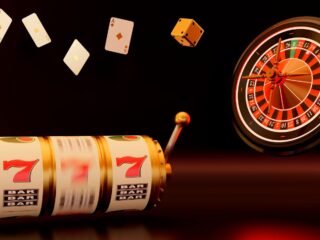
Even the smallest advantage can make a significant difference in sports. One often overlooked ‘OP’ factor is handedness. Scientists and analysts from top betting platforms like x1bet have studied left-handed athletes for decades to evaluate if their sports excellence stems from natural advantages or learned abilities. But do they truly have an edge? We will answer these questions in this article.
Why Left-Handed Athletes Excel
Left-handed athletes experience success in different sports because of various distinct factors, which include:
- Reaction Time – The speed at which left-handers react in fast-paced sporting scenarios shows somewhat faster results, according to certain studies.
- Angle Advantage – Left-handed athletes playing one-on-one sports such as tennis and boxing create unexpected defensive angles because right-handed competitors have no experience dealing with these sensations. The boxers who use the southpaw stance create unbalanced angles at fighting range, thus blocking right-handed opponents from landing solid shots. A southpaw punch thrown by the right lead hand creates unpredictable angles that confuse standard right-handed opponents and make them vulnerable to counterattacks. In the sport of baseball, left-handed pitchers benefit from their pitching angle to right-handed batters since those batters are unfamiliar with left-handed throws. The ball deviates in different ways when thrown, so batters become confused due to lack of experience against such deliveries.
- Defensive Challenges — Team sports benefit from left-handed players who detect weaknesses in defensive positions because training focuses mainly on right-handed interruptions. Lionel Messi and Arjen Robben distinguish themselves as elite football players through their expert ability to move inside the field with their left foot. Left-footed players gain an advantage against defenders because right-footed wingers represent their main blocking focus, so defensive players are less effective at predicting the movement of left-footed players.
- Survival of the Fittest Hypothesis – Some researchers believe that left-handedness in sports persists because it offers an evolutionary advantage, making those athletes more competitive.
While these elements do not ensure winning, they create chances for left-handed athletes to challenge opponent strategies during games.
Left-Handed Success Stories in Sports
Left-handed athletes throughout history have formed an exclusive group of athletic dominance in their particular sports.
- Tennis — Rafael Nadal, the “King of Clay,” has won 22 Grand Slam men’s singles titles, including a record-breaking 14 French Open titles. Historically, seven of the first seventeen Wimbledon champions in the Open Era were left-handed.
- Boxing — Around 20% of top-ranked boxers are left-handed, despite only 10% of the general population being left-handed. Southpaw fighters like Manny Pacquiao, an eight-division world champion, and Marvin Hagler have proven incredibly difficult for orthodox boxers to handle.
- Football — The football world reveres Lionel Messi and Diego Maradona as two of its all-time legendary players because they operate as left-footers. Throughout his career, Maradona managed to lead Argentina to their World Cup victory in 1986 before Messi brought home the title in 2022 by becoming the MVP of that tournament.
- Baseball — Historically renowned for his 714 career home runs, the left-handed Babe Ruth became famous for his role as a baseball pitcher and hitter. Left-handed pitching represents 25% of Major League Baseball (MLB) starting staff since players benefit from sitting southpaw in games compared to batters who stand right-handed at the plate.
- Golf — The outstanding grand slam winner Phil Mickelson receives recognition for his impressive left-handed swing technique which earned him six major victories.
- Table Tennis – As one of the most accomplished table tennis players, Timo Boll shows off his left-handed stroke to maintain challenges against Chinese athletes in the sports arena.
- Cricket — During a Test match, Brian Lara achieved a 400 not out run score, becoming the highest individual record in Test cricket history by batting left-handed.
Left-handers succeed in numerous sports that heavily depend on sharp choices along with unorthodox angles, and highly unpredictable gameplays.
The Betting Angle – Does It Influence Odds?
Sportsbooks and bettors have also taken note of the left-handed factor when setting odds. In some cases, left-handers are undervalued simply because their advantage is not always reflected in traditional statistics. Here are some of the key examples to consider:

- Left-handed tennis players achieve better results against right-handers primarily because of their advantage on clay courts, where they apply more spin to their strokes. Professional tennis player Rafael Nadal maintains the highest winning percentage of 90% for his matches in the clay court era.
- The statistical records show southpaws achieve more victories against orthodox fighters even though they enter boxing matches as underdogs. Statistics demonstrate that left-handed boxers defeat right-handed competitors in 54% of their boxing matches.
- The statistics of games shift when left-handers start on the pitching mound since particular teams perform worse versus left-handers. Major League Baseball teams demonstrate inferior performance when facing left-handed pitchers, with their batting averages falling between 20 and 30 points.
Whenever sportsbooks overlook updated odds based on emerging trends, bettors have better prospects to find valuable betting opportunities.
What’s the Recipe for Success?
Success is not automatically determined by left-handedness, yet specific sports demonstrate undeniable benefits from left-handedness as a distinguishing factor. Becoming conscious of left-handed players’ advantage becomes important before you put your bet down because left-handers frequently reach superior results in various athletic contests.



